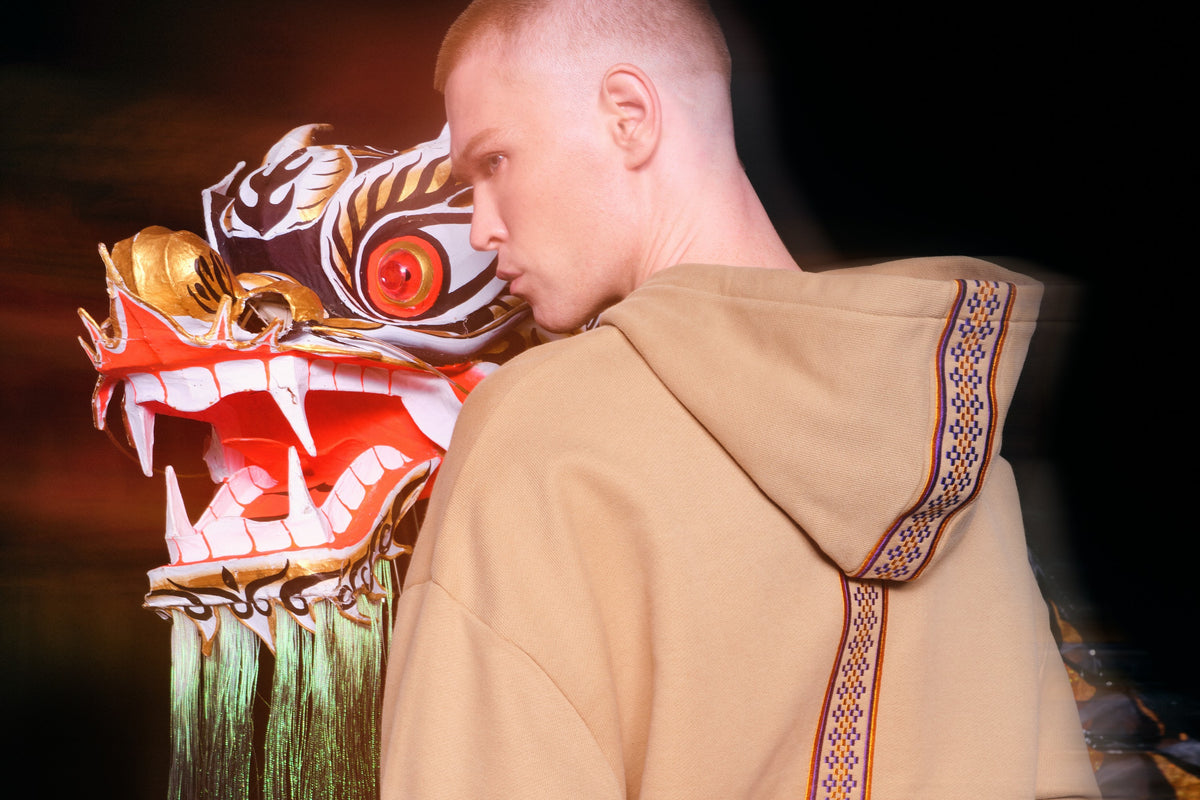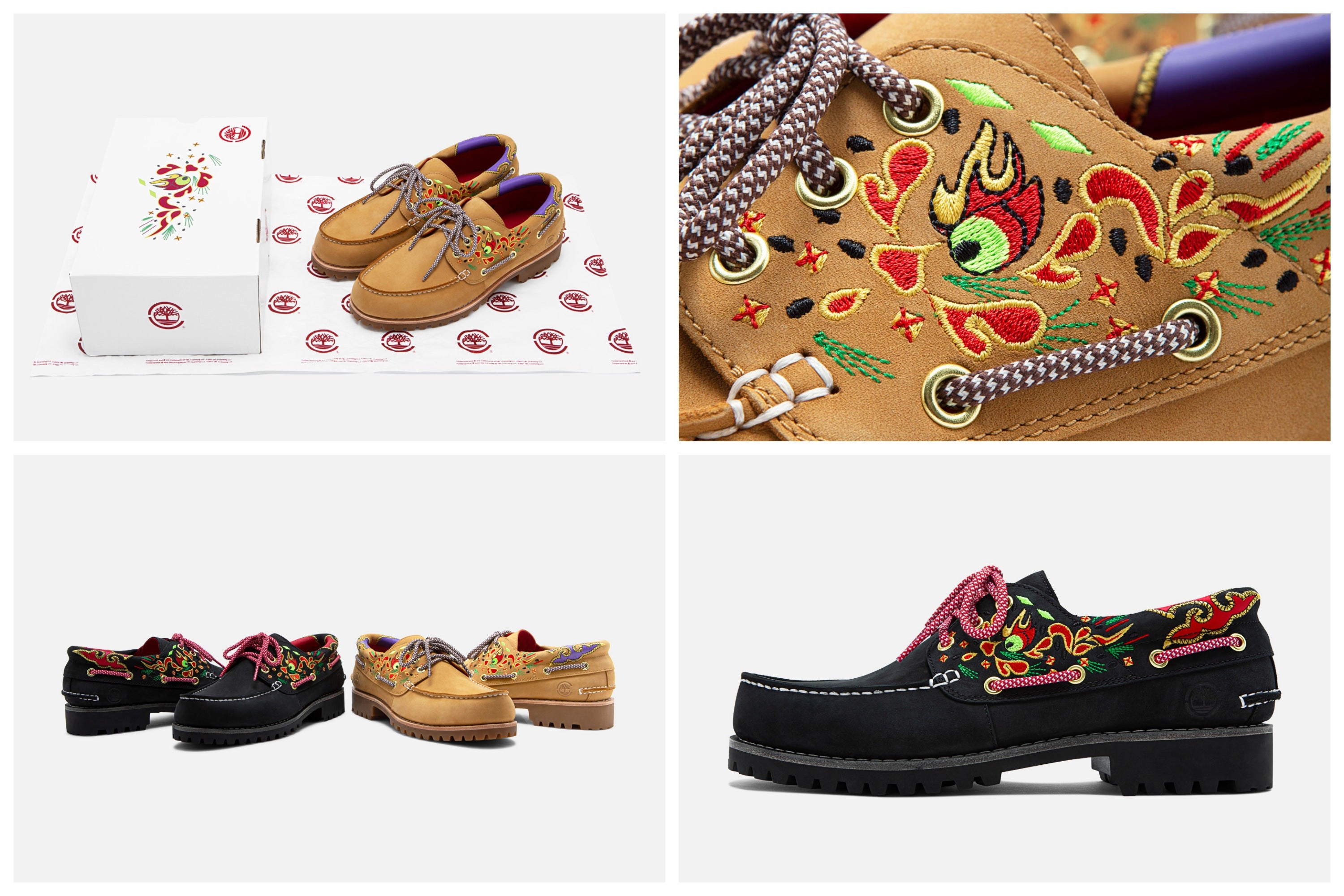
CLOT x TIMBERLAND: YOUR QUESTIONS ABOUT THE CHINESE DRAGON, ANSWERED
“Dragon motifs have always shown up in our designs. It’s mystical, it demands power, and it’s very representative of Chinese culture,” says CLOT Founder and Creative Director, Edison Chen.
CLOT and Timberland just rolled out their first collaboration of footwear and apparel, with a distinctive design inspired by the Chinese dragon. While the approach to reinterpreting this mystical creature is new, it's definitely not the first time we see this powerful beast adorning CLOT's creations. But where did the dragon come from, and why is it such an essential representation of Chinese culture? Scroll down to find answers to some of the questions about the Chinese dragon you've wanted to ask.
Where did dragons come from?
The dragon's presence in Chinese culture dates back as long as several thousands of years, with different stories about its origin. The more logical version was that after Huangdi, or the Yellow Emperor, successfully united all tribes of the Yellow River plain following a decade-lasting battle, he formed a new totem using parts of the symbols of some of the defeated tribes, hence the dragon was born.

Scholars, however, are more inclined to believe that the dragon stems from the ancient population's difficulties in comprehending natural phenomena such as rain, thunder, lightning, floods and waves. As a result, they imagined a guardian deity with the mightiest power, including weather-control, with physical characteristics inspired by what they spotted in their surroundings.
Why are the characteristics of a dragon?
Descriptions of the dragon evolved over time, but it's commonly described as a spitting image of nine different animals. Two thousand years ago, the philosopher Wang Fu described the nine characteristics of a dragon: horns of a stag, head of a camel, ears of a cow, eyes of a rabbit, neck of a snake, belly of a clam, scales of a carp, claws of an eagle and soles of a tiger.

How are they different from Western dragons?
Unlike Western dragons that breathe fire and are symbols of greed and destruction, Chinese dragons are auspicious deities that reside either high in the heavens or deep in the sea.
So is there just one dragon or more?
There are many types of dragons in Chinese folklore, each with a different cosmic task. They are all ruled by the Celestial Dragon, which protects the heavens. The weather-controlling dragon, for example, is the Spirit Dragon, while the Earth Dragon controls rivers. However, not all dragons have their focus on the outdoors. The Yellow Dragon, meanwhile, is known for scholarship, whereas the Coiled Dragon lives in the sea. There is also the four Dragon Kings—Azure Dragon, Red Dragon, Black Dragon and White Dragon—each ruling east, west, north or south parts of the ocean (the Four Seas). They are also the ones people prayed to for rain.

Why do Chinese refer themselves as 'descendants of the dragon'?
It was said that when the Yellow Emperor reached the end of his life, he, a devout Taoist, attained immortality and turned into a golden dragon, ascending to Heaven. Another legendary ruler, the Yan Emperor, was said to be conceived after a dragon visited his mother. Since the two are considered mythological ancestors of all Chinese people, hence Chinese refer to ourselves as 'descendants of the dragon'.
Why were dragons associated with Chinese emperors?
The stories of the Yellow Emperor and Yan Emperor inspired the use of the Chinese dragon as a symbol of imperial power. The five-clawed dragon appeared on robes of emperors since the Western Zhou Dynasty (1050-771 B.C.) and continued to be an exclusive symbol for emperors in many dynasties after that.
Fun fact: Only the five-clawed dragon was emperor exclusive. Dragons with four claws were reserved for imperial nobility and some high-ranking officials, while the three-clawed dragon was for lower ranks and the general public.

Why the dragon dance?
The livelihood of ancient Chinese was heavily dependent upon agriculture. Dragons were portrayed as the rulers of water and weather. Most importantly, the dispenser of rain and dragon dances were performed to attract the dragons' attention to plead for rain and a bumper harvest (hence good health and good luck) - this became a long-living tradition spread across the globe. Today, the dragon dance has become a celebration, encapsulated with a sense of unity and pride that connects every 'descendant of the dragon' in all parts of the world.
The CLOT x Timberland collection will be available at select JUICE locations worldwide and on JUICESTORE.COM from
July 20, 2022.
Price Information

CLOT x TIMBERLAND Men’s 3-Eye Lug Handsewn Boat Shoe (Black)
HKD 1,399 / USD 180 / RMB 1,390
CLOT x TIMBERLAND Men’s 3-Eye Lug Handsewn Boat Shoe (Wheat)
HKD 1,399 / USD 180 / RMB 1,390
CLOT x TIMBERLAND Women’s Noreen 3-Eye Lug Handsewn Boat Shoe (Black)
HKD 1,399 / USD 180 / RMB 1,390
CLOT x TIMBERLAND Women’s Noreen 3-Eye Lug Handsewn Boat Shoe (Wheat)
HKD 1,399 / USD 180 / RMB 1,390


